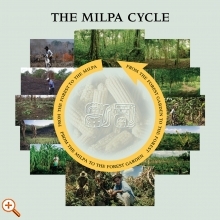Biodiversity is threatened all around the world today. The tropics boast some of the richest biodiversity in the world, and the tropics of the Americas are the most diverse on Earth. The Maya forest is shrinking with the expansion of pasturage and plow, which are agricultural techniques foreign to the traditional practice of forest gardening. Ecologists have show that the dominant plants of the Maya forest are all useful, and that these plants are nurtured by the traditional forest gardens still maintained by the Maya today. The ancient Maya city of El Pilar is a platform to show the potential of traditional practices as a conservation strategy for the region.
What is a Forest Garden?
A forest garden is an unplowed, tree-dominated agricultural field that is cultivated year-round. Requiring skill and knowledge to nurture, it sustains biodiversity and animal habitat while producing plants to meet a diverse array of human needs, like food, shelter, and medicine. It is almost entirely maintained with local resources, such as household refuse (compost), organic material (dead weeds), ashes from kitchen fires, and manure, all of which enrich the soil and productivity of the land without the use of chemically manufactured additives like pesticides or fertilizers. The forest garden is part of the traditional Maya land management system known as the milpa-forest garden cycle, or simply the milpa cycle.
More Information on Forest Gardens
El Pilar Forest Garden Network

